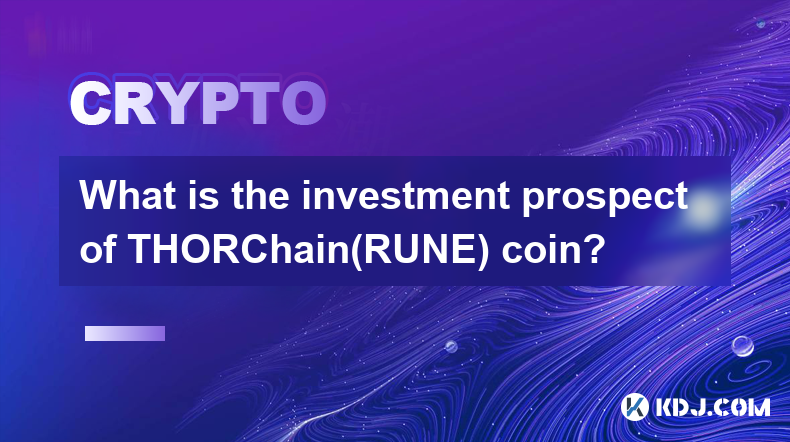-
 Bitcoin
Bitcoin $99,325.5277
2.48% -
 Ethereum
Ethereum $1,957.8293
7.06% -
 Tether USDt
Tether USDt $1.0005
0.00% -
 XRP
XRP $2.2082
3.46% -
 BNB
BNB $613.9617
0.95% -
 Solana
Solana $154.9743
5.46% -
 USDC
USDC $1.0000
-0.02% -
 Dogecoin
Dogecoin $0.1835
6.34% -
 Cardano
Cardano $0.7226
6.47% -
 TRON
TRON $0.2504
1.28% -
 Sui
Sui $3.7938
12.50% -
 Chainlink
Chainlink $14.9023
8.13% -
 Avalanche
Avalanche $20.9246
6.79% -
 Stellar
Stellar $0.2746
5.20% -
 Bitcoin Cash
Bitcoin Cash $410.3986
12.53% -
 UNUS SED LEO
UNUS SED LEO $8.8086
1.42% -
 Shiba Inu
Shiba Inu $0.0...01346
5.17% -
 Hedera
Hedera $0.1859
5.60% -
 Toncoin
Toncoin $3.1244
3.81% -
 Hyperliquid
Hyperliquid $21.5713
2.02% -
 Litecoin
Litecoin $91.6127
1.28% -
 Polkadot
Polkadot $4.2356
7.07% -
 Monero
Monero $293.3889
3.42% -
 Dai
Dai $1.0001
-0.02% -
 Bitget Token
Bitget Token $4.3248
0.45% -
 Ethena USDe
Ethena USDe $1.0004
0.00% -
 Pi
Pi $0.6220
6.61% -
 Pepe
Pepe $0.0...09218
13.47% -
 Bittensor
Bittensor $398.3299
9.28% -
 Uniswap
Uniswap $5.2179
8.02%
What is the investment prospect of THORChain(RUNE) coin?
THORChain (RUNE) coin offers compelling value as an investment opportunity within the expanding decentralized finance (DeFi) ecosystem, leveraging its trustless cross-chain swapping mechanism and strong technical foundation.
Dec 08, 2024 at 04:08 pm

What is the Investment Prospect of THORChain (RUNE) Coin?
THORChain (RUNE) is a decentralized autonomous organization (DAO) that operates a network of trustless liquidity pools that facilitate the cross-chain swapping of digital assets. Built upon the Cosmos blockchain, THORChain enables users to swap assets directly between different blockchains without the need for a centralized intermediary. This innovative approach to cross-chain swapping eliminates the security risks and friction associated with centralized exchanges, making it an attractive option for investors seeking exposure to the rapidly expanding decentralized finance (DeFi) ecosystem.
Factors to Consider When Evaluating the Investment Prospect of THORChain (RUNE) Coin
- Strong Team and Technical Foundation: The THORChain team comprises experienced blockchain developers and researchers with deep expertise in distributed systems and cryptography. The protocol is built upon a robust and scalable blockchain that has proven its ability to handle high transaction volumes while maintaining reliability and security.
- Unique Value Proposition: THORChain addresses a significant pain point in the DeFi ecosystem by providing a trustless and efficient cross-chain swapping mechanism. This value proposition is particularly compelling in light of the growing demand for interoperability and seamless asset transfer between different blockchains.
- Growing Ecosystem: THORChain has garnered substantial support from the crypto community, with a dedicated team of developers and a network of validators, node operators, and liquidity providers. The project has also established partnerships with other leading blockchain projects, including Cosmos, Binance, and Terra, further strengthening its position in the DeFi landscape.
- Tokenomics: The RUNE token is the native token of the THORChain network. It serves several functions, including incentivizing liquidity provision, securing the network through staking, and facilitating the payment of transaction fees. The distribution of RUNE tokens is well-balanced, with a significant portion allocated to the community through staking rewards.
Potential Catalysts for Growth:
- Increasing Adoption of DeFi: The DeFi ecosystem is experiencing rapid growth as more users recognize the benefits of decentralized financial services. THORChain's cross-chain swapping capabilities position it to capture a significant share of this growing market.
- Interoperability Enhancements: THORChain is actively working to expand the number of blockchain protocols it supports and improve the efficiency of cross-chain asset transfers. These enhancements will further enhance the value proposition of the network for users and liquidity providers.
- Governance and Community Engagement: THORChain is a community-governed project, with the RUNE token holders holding a significant role in the decision-making process. Active community engagement and a strong governance framework can contribute to the long-term success of the project.
Risks to Consider:
- Competition: The cross-chain swapping market is becoming increasingly competitive, with several other projects vying for market share. THORChain must continue to innovate and differentiate itself to maintain its competitive advantage.
- Regulatory Uncertainty: The regulatory landscape for DeFi is still evolving, and there is a risk that government regulations could adversely impact the growth of the sector. THORChain must closely monitor regulatory developments and adapt its operations accordingly.
- Technical Complexity: Cross-chain interoperability is a technically complex problem, and THORChain's protocol is significantly more complex than many other cryptocurrencies. This complexity could pose a barrier to wider adoption and increase the risk of operational issues.
Conclusion:
THORChain (RUNE) coin represents an intriguing investment opportunity in the rapidly growing DeFi ecosystem. The project's innovative cross-chain swapping capabilities, strong team, and well-executed tokenomics provide a solid foundation for growth. While there are some risks to consider, the potential rewards of investing in RUNE coin at this early stage could be substantial as the DeFi ecosystem continues to mature.
Disclaimer:info@kdj.com
The information provided is not trading advice. kdj.com does not assume any responsibility for any investments made based on the information provided in this article. Cryptocurrencies are highly volatile and it is highly recommended that you invest with caution after thorough research!
If you believe that the content used on this website infringes your copyright, please contact us immediately (info@kdj.com) and we will delete it promptly.
- XRP Just Did the Most Textbook Move — and It's Flying Toward This Resistance
- 2025-05-08 20:15:12
- LockBit ransomware gang's dark web affiliate panel was breached, leaking nearly 60,000 Bitcoin addresses
- 2025-05-08 20:15:12
- BNB Could Rise More Than 360% to $2775 by 2028, According to Standard Chartered
- 2025-05-08 20:10:12
- Cardano’s $619M Scandal Centers on Allegations About Unclaimed ADA Moved Without Permission by Hoskinson
- 2025-05-08 20:10:12
- Bitcoin (BTC) Has Recovered Rather Sharply
- 2025-05-08 20:05:12
- PEPE Coin Shows Strong Recovery Signals as Whale Accumulation and Technical Patterns Point to a Potential Breakout
- 2025-05-08 20:05:12
Related knowledge

Is Ethereum smart contract call fee high? How to optimize costs?
May 08,2025 at 09:35am
Is Ethereum Smart Contract Call Fee High? How to Optimize Costs? The world of Ethereum smart contracts has revolutionized the way we think about decentralized applications and blockchain technology. However, one of the most frequently discussed topics within this realm is the cost associated with executing smart contract calls. In this article, we will ...

Is Ethereum Layer2 fee low? How to use it cheaper?
May 08,2025 at 03:56am
The question of whether Ethereum Layer 2 solutions offer lower fees and how to use them more economically is a topic of great interest within the cryptocurrency community. Ethereum's Layer 2 solutions have been developed to address the high transaction fees and scalability issues associated with the main Ethereum network. In this article, we will delve ...

How to calculate Ethereum network fee? How to reduce transaction costs?
May 08,2025 at 02:15am
Understanding and managing Ethereum network fees is crucial for anyone involved in transactions on the Ethereum blockchain. The network fee, also known as gas fee, is the amount of Ether (ETH) required to successfully conduct a transaction or execute a smart contract on the Ethereum network. Calculating these fees and finding ways to reduce them can sig...

What is Ethereum Gas Fee? How to optimize Gas Fee to save costs?
May 08,2025 at 03:43am
Ethereum gas fees are a crucial aspect of interacting with the Ethereum blockchain. Understanding and optimizing these fees can significantly impact the cost-effectiveness of transactions and smart contract interactions. In this article, we will delve into what Ethereum gas fees are, how they are calculated, and provide detailed strategies for optimizin...

How to perform MOVE cross-chain transfer? What to do if the gas fee is too high?
May 07,2025 at 08:03pm
Introduction to MOVE Cross-Chain TransferCross-chain transfers have become an essential part of the cryptocurrency ecosystem, allowing users to move assets between different blockchain networks. One of the popular protocols for achieving this is the MOVE cross-chain transfer. This article will guide you through the process of performing a MOVE cross-cha...

How is the DYDX liquidation price calculated? How is the forced liquidation mechanism?
May 08,2025 at 06:49am
The DYDX liquidation price and the forced liquidation mechanism are crucial aspects of trading on the dYdX platform, a decentralized exchange that allows users to trade perpetual contracts. Understanding these concepts is essential for managing risk and maximizing potential returns. In this article, we will delve into the details of how the DYDX liquida...

Is Ethereum smart contract call fee high? How to optimize costs?
May 08,2025 at 09:35am
Is Ethereum Smart Contract Call Fee High? How to Optimize Costs? The world of Ethereum smart contracts has revolutionized the way we think about decentralized applications and blockchain technology. However, one of the most frequently discussed topics within this realm is the cost associated with executing smart contract calls. In this article, we will ...

Is Ethereum Layer2 fee low? How to use it cheaper?
May 08,2025 at 03:56am
The question of whether Ethereum Layer 2 solutions offer lower fees and how to use them more economically is a topic of great interest within the cryptocurrency community. Ethereum's Layer 2 solutions have been developed to address the high transaction fees and scalability issues associated with the main Ethereum network. In this article, we will delve ...

How to calculate Ethereum network fee? How to reduce transaction costs?
May 08,2025 at 02:15am
Understanding and managing Ethereum network fees is crucial for anyone involved in transactions on the Ethereum blockchain. The network fee, also known as gas fee, is the amount of Ether (ETH) required to successfully conduct a transaction or execute a smart contract on the Ethereum network. Calculating these fees and finding ways to reduce them can sig...

What is Ethereum Gas Fee? How to optimize Gas Fee to save costs?
May 08,2025 at 03:43am
Ethereum gas fees are a crucial aspect of interacting with the Ethereum blockchain. Understanding and optimizing these fees can significantly impact the cost-effectiveness of transactions and smart contract interactions. In this article, we will delve into what Ethereum gas fees are, how they are calculated, and provide detailed strategies for optimizin...

How to perform MOVE cross-chain transfer? What to do if the gas fee is too high?
May 07,2025 at 08:03pm
Introduction to MOVE Cross-Chain TransferCross-chain transfers have become an essential part of the cryptocurrency ecosystem, allowing users to move assets between different blockchain networks. One of the popular protocols for achieving this is the MOVE cross-chain transfer. This article will guide you through the process of performing a MOVE cross-cha...

How is the DYDX liquidation price calculated? How is the forced liquidation mechanism?
May 08,2025 at 06:49am
The DYDX liquidation price and the forced liquidation mechanism are crucial aspects of trading on the dYdX platform, a decentralized exchange that allows users to trade perpetual contracts. Understanding these concepts is essential for managing risk and maximizing potential returns. In this article, we will delve into the details of how the DYDX liquida...
See all articles
























![[2025.05.08] The two routes of Bitcoin continue to be observed, and gold is still bullish. [2025.05.08] The two routes of Bitcoin continue to be observed, and gold is still bullish.](/uploads/2025/05/08/cryptocurrencies-news/videos/routes-bitcoin-continue-observed-gold-bullish/image_500_375.webp)



























































